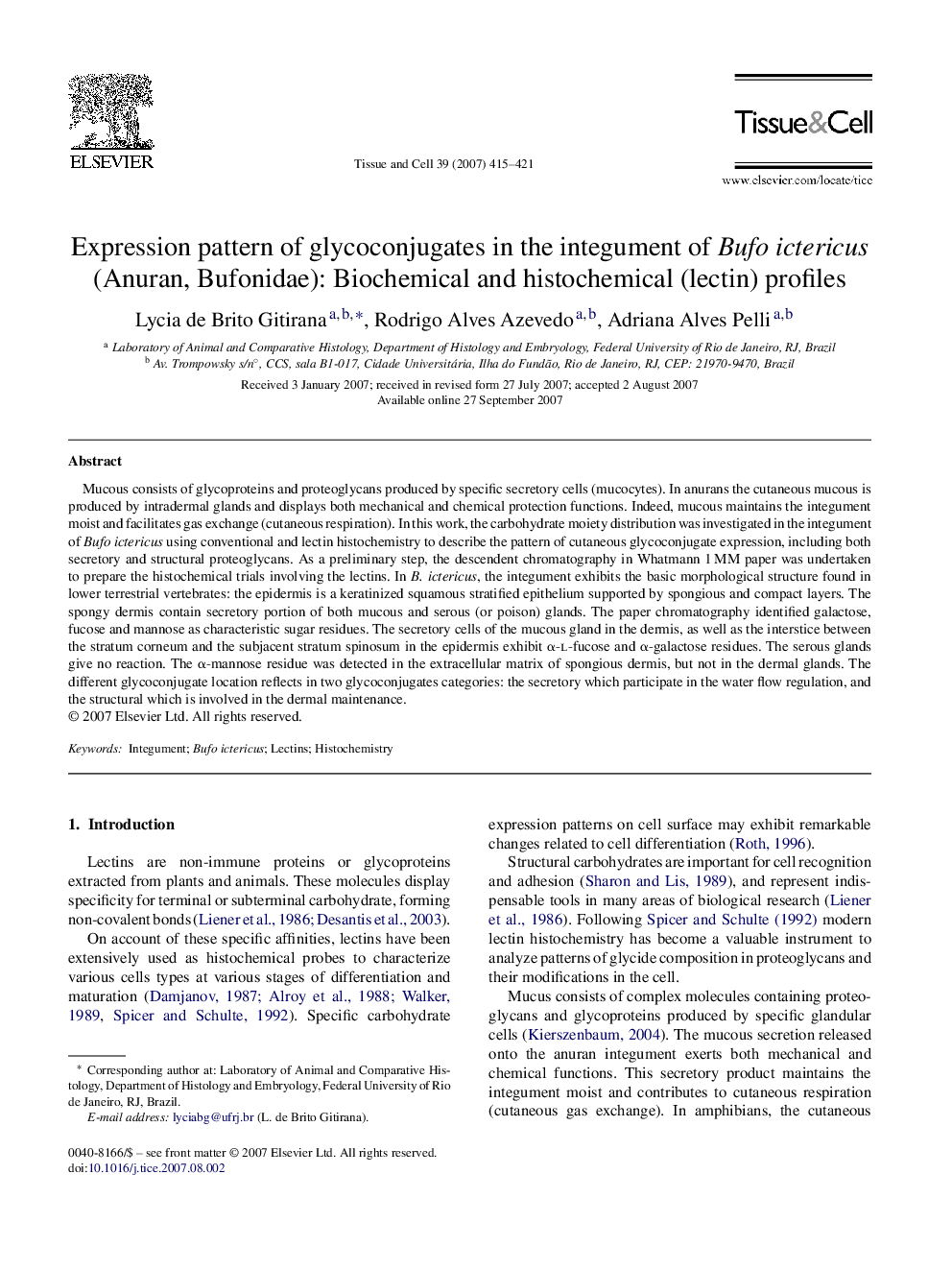| Article ID | Journal | Published Year | Pages | File Type |
|---|---|---|---|---|
| 2204132 | Tissue and Cell | 2007 | 7 Pages |
Mucous consists of glycoproteins and proteoglycans produced by specific secretory cells (mucocytes). In anurans the cutaneous mucous is produced by intradermal glands and displays both mechanical and chemical protection functions. Indeed, mucous maintains the integument moist and facilitates gas exchange (cutaneous respiration). In this work, the carbohydrate moiety distribution was investigated in the integument of Bufo ictericus using conventional and lectin histochemistry to describe the pattern of cutaneous glycoconjugate expression, including both secretory and structural proteoglycans. As a preliminary step, the descendent chromatography in Whatmann 1 MM paper was undertaken to prepare the histochemical trials involving the lectins. In B. ictericus, the integument exhibits the basic morphological structure found in lower terrestrial vertebrates: the epidermis is a keratinized squamous stratified epithelium supported by spongious and compact layers. The spongy dermis contain secretory portion of both mucous and serous (or poison) glands. The paper chromatography identified galactose, fucose and mannose as characteristic sugar residues. The secretory cells of the mucous gland in the dermis, as well as the interstice between the stratum corneum and the subjacent stratum spinosum in the epidermis exhibit α-l-fucose and α-galactose residues. The serous glands give no reaction. The α-mannose residue was detected in the extracellular matrix of spongious dermis, but not in the dermal glands. The different glycoconjugate location reflects in two glycoconjugates categories: the secretory which participate in the water flow regulation, and the structural which is involved in the dermal maintenance.
